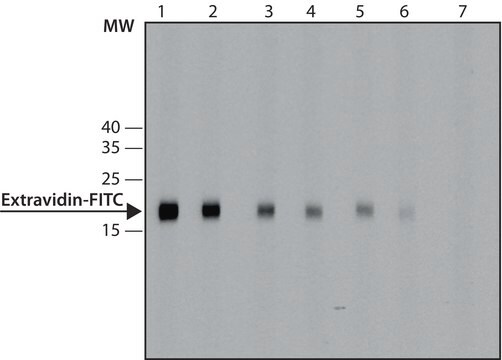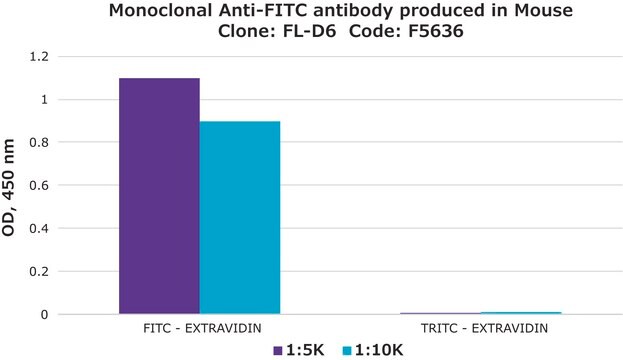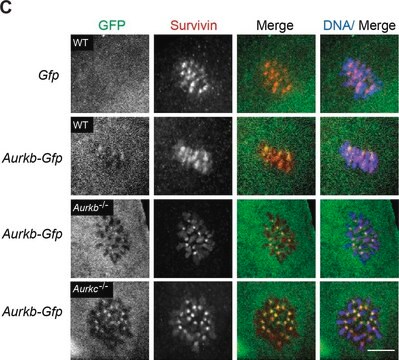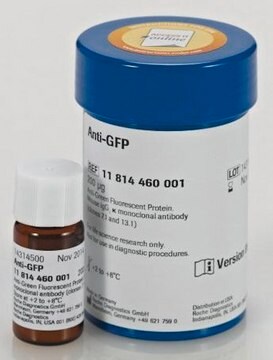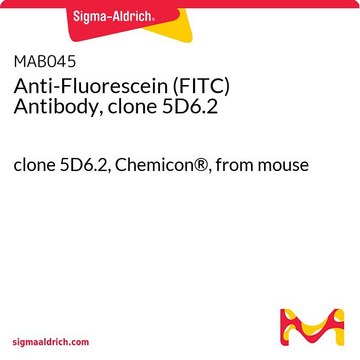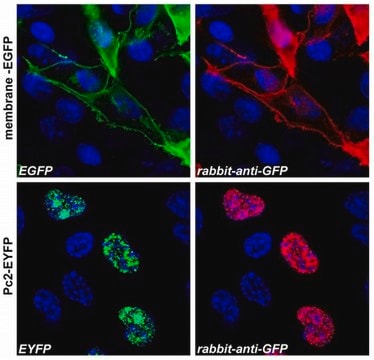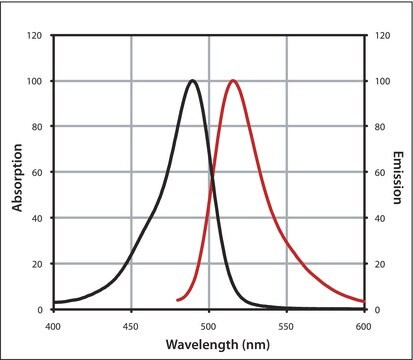B0287
Monoclonal Anti-FITC−Biotin antibody produced in mouse
clone FL-D6, purified immunoglobulin, buffered aqueous solution
Synonym(s):
Monoclonal Anti-FITC
Sign Into View Organizational & Contract Pricing
All Photos(1)
About This Item
UNSPSC Code:
12352203
NACRES:
NA.43
Recommended Products
biological source
mouse
Quality Level
conjugate
biotin conjugate
antibody form
purified immunoglobulin
antibody product type
primary antibodies
clone
FL-D6, monoclonal
form
buffered aqueous solution
technique(s)
immunohistochemistry (formalin-fixed, paraffin-embedded sections): 1:400 using human tonsil
isotype
IgG1
shipped in
dry ice
storage temp.
−20°C
target post-translational modification
unmodified
Looking for similar products? Visit Product Comparison Guide
General description
Monoclonal Anti-FITC (mouse IgG1 isotype) is derived from the hybridoma produced by the fusion of mouse myeloma cells and splenocytes from an immunized mouse.
Specificity
The antibody reacts with both free and conjugated fluorescein isothiocyanate (FITC).
Immunogen
FITC-BSA conjugate
Application
Monoclonal Anti-FITC-Biotin antibody produced in mouse has been used:
- for amplification of signal in immunofluorescence assays
- in Ag-activated beads for flow-based micro immunoassay of parathyroid hormone and IL-5
- enzyme linked immunosorbent assay (ELISA)
Biochem/physiol Actions
Fluorochrome labeling provides a rapid and accurate localization of the site of antigen-antibody interaction when one of the reactants from parts of a cell, tissue or other biological structure. Fluorescein isothiocyanate (FITC) is a commonly used marker for antibodies in immunofluorescence techniques since the conjugation of FITC to proteins is relatively easy and does not, in general, destroy the biological activity of the labelled substances. FITC is widely used as a hapten to label different proteins and anti-FITC antibodies are used to identify these labeled proteins. Antibodies to FITC serve as universal indicator reagents by bridging FITC with another immunohistochemical reagent, such as alkaline phosphatase, horseradish peroxidase or biotin.
Physical form
Solution in 0.01 M phosphate buffered saline, pH 7.4, containing 1% bovine serum albumin, and 15 mM sodium azide
Disclaimer
Unless otherwise stated in our catalog or other company documentation accompanying the product(s), our products are intended for research use only and are not to be used for any other purpose, which includes but is not limited to, unauthorized commercial uses, in vitro diagnostic uses, ex vivo or in vivo therapeutic uses or any type of consumption or application to humans or animals.
Not finding the right product?
Try our Product Selector Tool.
Storage Class Code
10 - Combustible liquids
WGK
WGK 3
Flash Point(F)
Not applicable
Flash Point(C)
Not applicable
Choose from one of the most recent versions:
Already Own This Product?
Find documentation for the products that you have recently purchased in the Document Library.
M A Hayes et al.
Analytical chemistry, 73(24), 5896-5902 (2002-01-17)
A small-volume heterogeneous immunoassay system is demonstrated in microchannels exploiting magnetic manipulations of small paramagnetic particles (1-2-microm diameter). The small-diameter particles help to create a high surface-area-to-volume ratio that generates the sensitivity for the small detection volumes. Flow characteristics of
Flow-based microimmunoassay
Hayes MA, et al.
Analytical Chemistry, 73(24), 5896-5902 (2001)
I J Harmer et al.
Journal of immunological methods, 122(1), 115-121 (1989-08-15)
In a model ELISA system alkaline phosphatase (AP) absorbed onto microtitre wells was employed as the target antigen. The antigen was then reacted with a monoclonal antibody to AP either unlabelled or labelled with (a) FITC and (b) biotin. The
Ali Gorgin Karaji et al.
International immunopharmacology, 5(6), 1019-1027 (2005-04-15)
Opioid peptides modulate immune responses via ligation to classical opioid receptors (mu, delta and kappa), expressed on immune cells, or in an indirect fashion via the central nervous system. The combination of immunofluorescent technique and flow cytometry has proven to
Chapter 11 - (Strept)avidin?Biotin Systems
Bioconjugate Techniques, 465-505 (2013)
Our team of scientists has experience in all areas of research including Life Science, Material Science, Chemical Synthesis, Chromatography, Analytical and many others.
Contact Technical Service